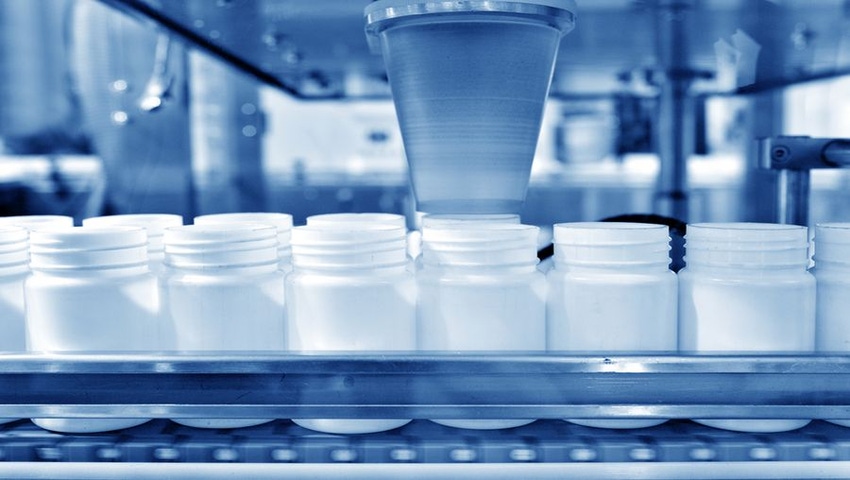Investing in Faster Packaging Machinery
High-yield production machines may seem like a good idea for health and nutrition manufacturers, but increasing potential production rates in one area can adversely affect production in other areas and drive costs.
October 18, 2016

It’s a good problem to have. Owners or managers of supplement, healthy food, cosmeceutical, nutraceutical or other natural product manufacturing companies often outsell their production lines so that operations may be failing to keep up with sales. This can determine whether or to what extent a company can capitalize on the success of its products. Given the importance of production speed, it is common for companies to invest in a machine to release the bottleneck and let production rates fly. However, increasing potential production rates in one area can adversely affect production in other areas and increase costs.
Before investing in faster packaging machinery, consider how a faster machine may affect the other steps in the packaging line, how it fits into long-term growth plans and how staffing may need to change.
Bottleneck
In many cases, growing natural products companies package products with a combination of manual methods and semi-automated filling, capping, labeling and other machinery as costs permit. If the capping machine, for example, cannot keep up with required production rates, investing in a faster capping machine seems a sensible action. While replacing a slower capping machine with a new one that caps at 100 bottles per minute may eliminate the bottleneck, it may also create a new bottleneck downstream at the labeler, tamper-evident neck bander or the cartoner since their production rates may remain slower than 100 bottles per minute. Since a packaging line moves only as fast as its slowest element (typically the filler), every machine in the line needs to operate at or above the desired speed. Any that run slower than the rest may cause bottlenecks requiring turntables, conveyors and accessories to manage the differences in speed. Any that run faster than the rest cannot live up to their full capabilities. When considering a faster machine, it is vital to consider upgrading the other machines to match the faster rate of production.
Buying Too Much Machine
Accurately forecasting a company's growth and production requirements is a tricky business, and thriving natural products companies may be inclined to invest in new packaging machinery to accommodate the rosiest growth trajectory, especially given the appealing tax breaks on capital equipment and the low interest rate environment. But investing in more speed and capacity than is necessary not only increases costs without an immediate corresponding benefit, but it also adds the risk that if and when the projected growth is achieved, the machinery may be worn to the point that repair or replacement is needed or, worse, it may become obsolete by new technology.
Building a modern, entry-level packaging line with automation technology that delivers required production rates now and can also keep pace with the company as its production needs grow in the near term makes far more sense. If done properly, the mostly manual packaging line producing 10 bottles per minute may be easily increased to 40 bottles per minute with significant labor savings and then grow to produce 60 to 70 bottles per minute or more as needed at a reasonable cost. If growth outpaces the original packaging line, these packaging machines may be sold fairly quickly to help fund the next packaging line since their relatively low cost and versatility ensures a brisk secondary market. The fastest, most expensive machines become more difficult to sell used since there is a smaller market at that price range.
Labor Savings
Automating manual tasks, such as inserting a desiccant into a bottle, necessarily and immediately increase production rates and save on labor. But as the packaging line becomes faster and more automated, it also becomes more complex, and downtime becomes more expensive. Each machine, conveyor and accessory needs to be set to precisely match the product and the settings of the other machines to achieve maximum speed, accuracy and efficiency. If one machine goes down while running at 20 bottles per minute, for example, a person can fill in while it's being fixed. But at higher speeds, that isn't always possible, and production suffers. In many cases, investing in faster packaging machinery also requires an investment in a full-time line maintenance and operations person who can become intimately familiar with each machine. For contract packagers and others who need setup, cleaning and changeover to move quickly, such a skilled, experienced technician who knows how to get every last bottle of production out of the packaging line becomes one of the company's most valuable assets.
Investing in automating manual packaging tasks and upgrading semi-automatic packaging machinery are obvious ways to speed production, but they trigger other considerations, some that may be costly. If cost isn't an issue, then invest $1 million in state-of-the-art, automated, high-speed packaging machinery and a spacious facility to house the entire packaging line. If cost is an issue, look at the overall packaging line as a system, and consider adding automated machinery incrementally to keep pace with production goals while minimizing the risk and ensuring desired production increase is fully realized.
John Deitz is president of the family-owned Deitz Co. Inc. (deitzco.com) founded in 1959. The company designs and manufactures tamper-evident neck banders, heat tunnels, tablet and capsule counters, desiccant and cotton inserters and other automated packaging machinery and accessories at its Wall, New Jersey headquarters. Deitz also provides complete filling line design and installation services.
About the Author(s)
You May Also Like




.png?width=800&auto=webp&quality=80&disable=upscale)